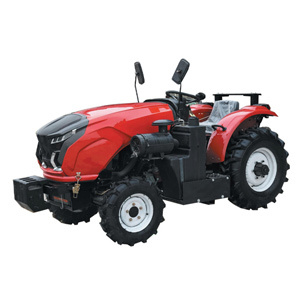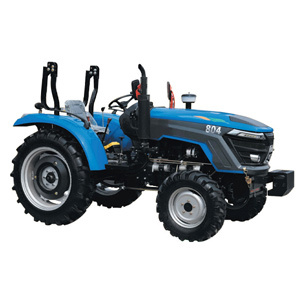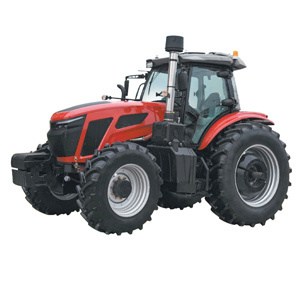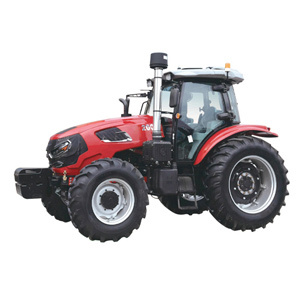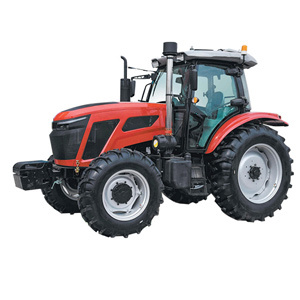Providing you with a one-stop solution for tractors
Extend Your Tractor's Lifespan: 5 Maintenance Secrets Even Veteran Operators Might Not Know
Release time:
2025-10-24
Your tractor is a long-term investment, and proper maintenance is the key to protecting it. While everyone knows to check the oil and change the filters, truly extending its lifespan and maximizing its value requires going beyond the basics. Here are five pro-level maintenance secrets that can add years of reliable service to your machine.
Secret 1: Master the "Operational" Warm-Up
The Common Mistake: Simply starting the engine and letting it idle at high RPM until the coolant temperature gauge moves.
The Secret Technique: A true warm-up involves both the engine and the hydraulic system. Here's the correct procedure:
Start the engine and let it run at a moderate idle (around 1000-1200 RPM) for 2-3 minutes.
Slowly and gently, cycle all hydraulic functions—lift the 3-point linkage, operate the remote couplers (without an implement attached), and turn the steering from lock to lock.
Do this for another 3-5 minutes. This allows the hydraulic fluid to warm up and circulate throughout the entire system, including the transmission and rear axle.
Why It Works: Cold, thick hydraulic oil can cause damage by bypassing seals and creating excessive pressure in the system. This "operational" warm-up ensures all components are lubricated and working under normal pressure before you put them under load, preventing premature wear in the hydraulic pumps and cylinders.
Secret 2: The "Fuel Polishing" Habit
The Common Mistake: Only changing the primary fuel filter when the engine starts to lose power.
The Secret Technique: Practice "fuel polishing." Once a year (or every 500 hours), use the tractor's built-in fuel lift pump to circulate and clean the fuel.
Place a clean container at the fuel return line.
Disconnect the return line and place it in the container.
Activate the manual primer pump on the lift pump for several minutes. This will push fresh, clean fuel from the tank through the system and out the return line, flushing out any water and microscopic contaminants that have settled in the lines and injectors.
Why It Works: This simple act cleans the fuel system from the inside out, protecting your expensive fuel injectors and injection pump from water corrosion and abrasive particles, which are the primary killers of diesel engines.
Secret 3: The "Breather" Check
The Common Mistake: Completely overlooking the various breathers on the tractor.
The Secret Technique: Regularly inspect and clean all system breathers. Your tractor has them for the engine, transmission, hydraulic system, and axles. They are small caps or valves designed to allow air to enter and exit as the components heat up and cool down, preventing pressure buildup.
Why It Works: A clogged breather is a silent killer. It can cause:
Transmission/Hydraulic Breather: Pressure buildup that forces oil past main seals, leading to costly leaks.
Axle Breather: Pressure that can blow out axle seals.
Engine Breather: Can cause crankcase pressure, leading to oil leaks and reduced engine life.
A quick visual inspection and cleaning with brake cleaner during your service intervals can prevent catastrophic failures.
Secret 4: The "Parking Ritual" for Longevity
The Common Mistake: Parking the tractor immediately after a heavy workload, especially one involving the hydraulic system.
The Secret Technique: Implement a 5-minute "cool-down" ritual before shutdown.
After finishing your work, let the tractor idle for 3-5 minutes without any load.
Lower all hydraulic implements (loader, 3-point linkage) completely to the ground. This relieves all pressure from the hydraulic cylinders.
Cycle all remote hydraulic levers to release any residual pressure in the lines.
Why It Works: This allows the turbocharger (if equipped) to slow down gradually and cool, and the engine temperatures to stabilize. Relieving hydraulic pressure extends the life of cylinder seals and hose ends, preventing leaks and "down-time" failures.
Secret 5: The "Underbelly" Cleaning Campaign
The Common Mistake: A quick external wash, ignoring the buildup of mud, chaff, and debris underneath.
The Secret Technique: Schedule a thorough "underbelly" cleaning after every season or intense muddy operation. Use a pressure washer (carefully) or a steam cleaner to remove all caked-on material from the transmission housing, axle tubes, brake linkages, and hydraulic lines.
Why It Works: Accumulated debris:
Traps Moisture: Leading to rapid corrosion and rusting of critical components.
Acts as an Insulator: Preventing the transmission and hydraulics from cooling properly, leading to overheating.
Hides Leaks: A small oil or hydraulic leak will go unnoticed until it's a major problem.
A clean undercarriage allows for better cooling and lets you spot small issues before they become big, expensive repairs.
Conclusion
These five secrets are not about working harder, but working smarter. Integrating these habits into your maintenance routine requires minimal extra time but pays massive dividends in reliability, resale value, and years of trouble-free service from your most valuable partner on the farm.
RELATED BLOG

